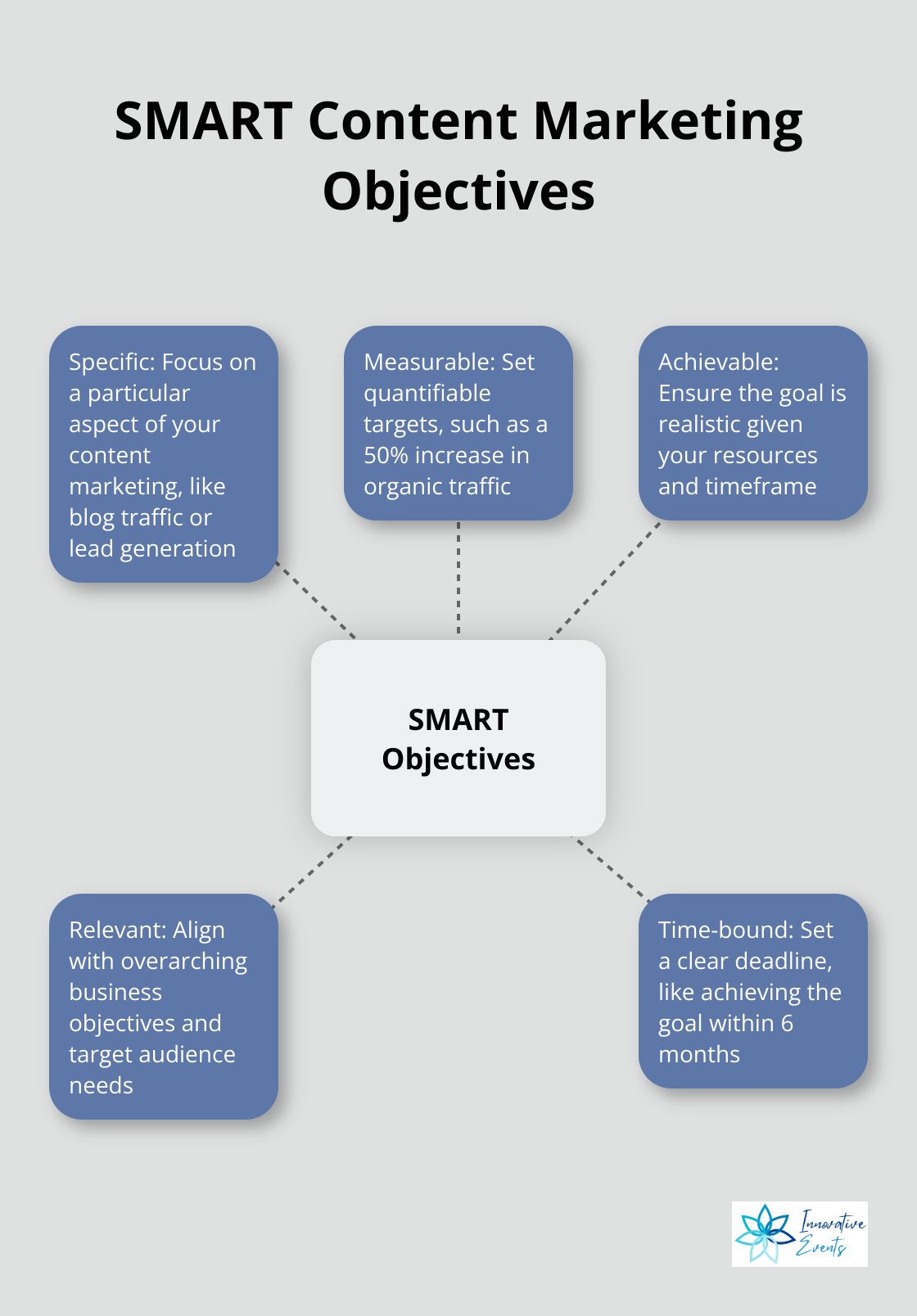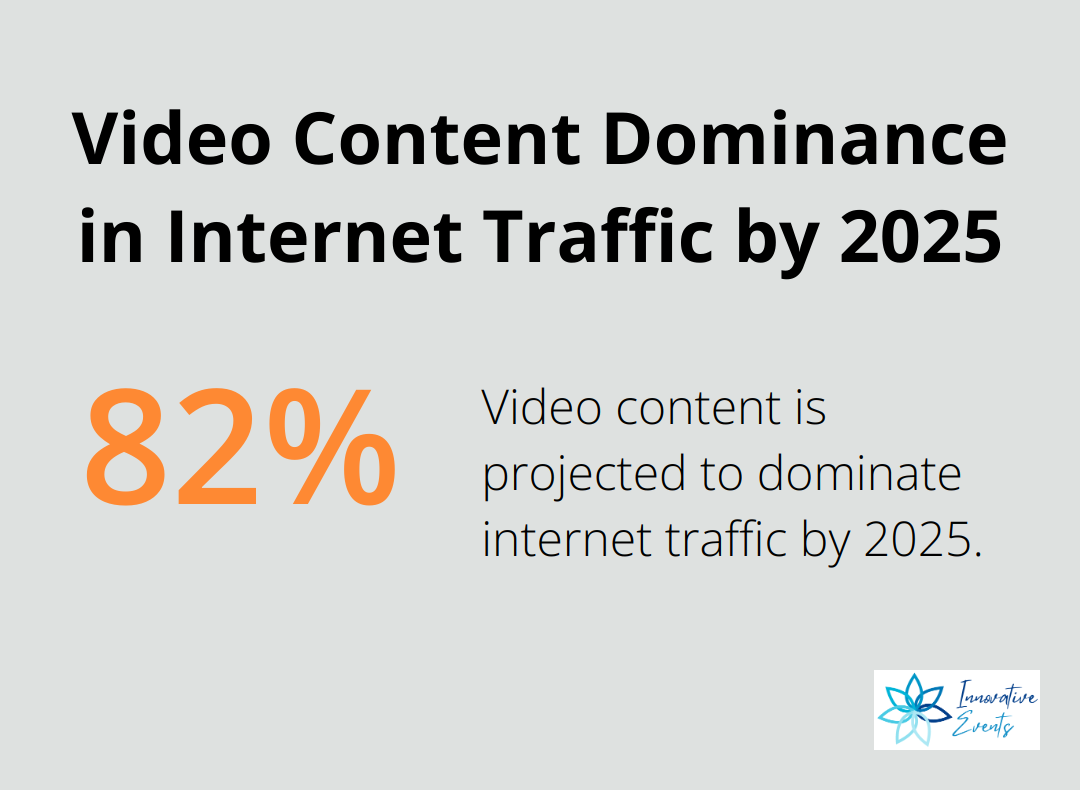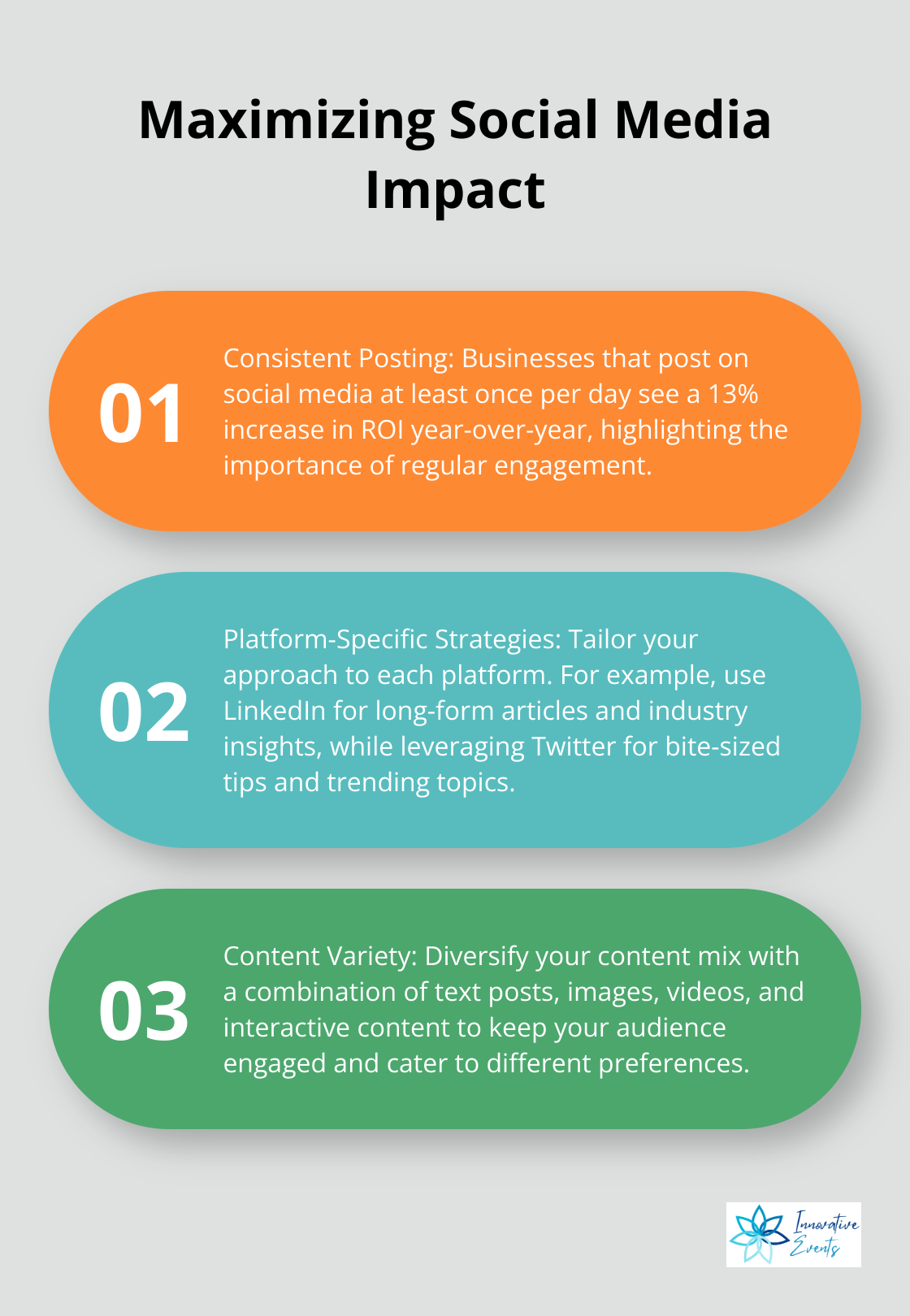Content marketing is a powerful tool for businesses to connect with their audience and drive growth. At Innovative Events, we’ve seen firsthand how a well-crafted strategy can transform a company’s online presence.
This post will guide you through creating a sample content marketing strategy that delivers results. We’ll cover goal-setting, planning, and implementation to help you build a robust content marketing approach.
Define Your Content Marketing Goals
Identify Your Target Audience
Start by creating detailed buyer personas. These profiles go beyond demographics – they uncover your ideal customers’ challenges, motivations, and behaviors. Use tools like Google Analytics to analyze your website visitors. Conduct surveys and interviews with existing customers. This research will reveal surprising insights about your audience’s content preferences and pain points.
For example, a B2B software company might discover that their target persona is mid-level IT managers who struggle with legacy system integration. This knowledge shapes everything from topic selection to content format and distribution channels.
Set Specific, Measurable Objectives
Vague goals like “increase brand awareness” won’t suffice. Your content marketing objectives need to follow the SMART framework (Specific, Measurable, Actionable, Relevant, and Time-bound).
Here’s a concrete example: “Increase organic traffic to our blog by 50% within 6 months through weekly long-form articles targeting high-value keywords.”
This goal is specific (focused on blog traffic), measurable (50% increase), achievable (with consistent effort), relevant (drives potential leads), and time-bound (6-month timeframe).

Align Content Goals with Business Strategy
Your content marketing goals should directly support overarching business objectives. If your company aims to expand into a new market segment, your content strategy might focus on creating educational resources tailored to that audience.
Consider how content can impact different stages of the customer journey. Do you need to generate more top-of-funnel leads? Or do you need to nurture existing prospects towards a purchase decision? Mapping content goals to specific funnel stages ensures your efforts drive tangible business results.
Effective goal-setting isn’t a one-time task. You should regularly revisit and refine your objectives based on performance data and shifting business priorities. This agile approach allows you to maximize the impact of your content marketing efforts over time.
Now that you’ve defined clear goals for your content marketing strategy, it’s time to develop a concrete plan to achieve them. In the next section, we’ll explore how to create a comprehensive content plan that aligns with your objectives and resonates with your target audience.
How to Build Your Content Roadmap
Develop a Dynamic Content Calendar
A solid content plan forms the foundation of any successful content marketing strategy. Start by creating a content calendar for the next 3-6 months. Use project management tools to visualize your content schedule. Include important dates, product launches, and industry events relevant to your business. Your calendar should allow flexibility for trending topics or unexpected opportunities.
For each content piece, specify:
- Publication date
- Content type (blog post, video, infographic, etc.)
- Target keyword(s)
- Assigned team member
- Distribution channels
Pro tip: Plan content creation at least 2-4 weeks before publication dates to ensure quality control and allow time for revisions.
Diversify Your Content Portfolio
Don’t limit yourself to one content type. Vary your content to cater to different learning styles and consumption preferences. Video content is projected to account for 82% of all internet traffic by 2025, underscoring the massive influence of online video.

Consider including:
- Long-form blog posts (1500+ words) for in-depth topics
- Short-form social media posts for quick engagement
- Video tutorials or product demos
- Podcasts for on-the-go consumption
- Infographics to visualize complex data
- Interactive content like quizzes or calculators
Each content type should serve a specific purpose in your funnel. Use top-of-funnel blog posts to attract new visitors, and bottom-of-funnel case studies to encourage prospects towards a purchase decision.
Identify High-Impact Topics
Use SEO tools to conduct keyword research and identify topics with high search volume and manageable competition. But don’t stop there. Explore industry forums, social media discussions, and customer feedback to uncover the questions and pain points your audience actually discusses.
Create content clusters around core topics relevant to your business. For instance, if you’re a project management software company, your main topics might include:
- Agile methodology
- Remote team collaboration
- Productivity hacks
- Project budgeting
Under each main topic, develop a series of related subtopics. This approach helps establish topical authority and improves your chances of ranking for competitive keywords.
Try to balance evergreen content (timeless topics that provide long-term value) with timely, trend-based pieces that can generate quick traffic spikes.
Your content roadmap serves as a guide, but it’s not set in stone. The next step involves implementing your plan and effectively distributing your content to reach your target audience. Let’s explore how to put your strategy into action and maximize its impact.
How to Maximize Your Content’s Reach and Impact
Master On-Page SEO Techniques
Search engine optimization extends beyond keywords. Create comprehensive, valuable content that answers your audience’s questions. Tools like Clearscope or MarketMuse help analyze top-ranking pages and identify content gaps to fill.
Structure your content for readability. Use descriptive headers, short paragraphs, and bulleted lists where appropriate. Include relevant internal links to keep readers engaged with your site.
Don’t overlook technical SEO elements. Optimize your meta titles and descriptions, use alt text for images, and ensure your site loads quickly on both desktop and mobile devices.
Harness the Power of Social Media
Each social platform has its own content ecosystem. Tailor your approach accordingly:
LinkedIn: Share long-form articles and industry insights. Engage in relevant groups and use hashtags strategically.
Twitter: Post bite-sized tips, participate in Twitter chats, and leverage trending topics related to your industry.
Instagram: Use high-quality visuals and Instagram Stories to showcase your brand personality and behind-the-scenes content.
TikTok: Create short, entertaining videos that educate or solve problems for your audience. Experiment with trending sounds and challenges.
Businesses that post on social media at least once per day see a 13% increase in ROI year-over-year (according to Hootsuite). Consistency is key.

Leverage Email Marketing for Direct Engagement
Email remains one of the most effective channels for content distribution. Segment your email list based on subscriber interests and behaviors. This allows you to send targeted content that resonates with specific audience segments.
Experiment with different email formats. Try newsletters that curate your best content, dedicated emails for major pieces, and drip campaigns that nurture leads over time.
Pay attention to your subject lines. Test everything – different subject lines, send times, and email lengths. Measure what matters – conversions and revenue tell you more than open rates.
Measure and Refine Your Strategy
Monitor your analytics closely. Track key performance indicators (KPIs) such as website traffic, engagement rates, and conversion metrics. Use this data to identify which content types and distribution channels perform best for your audience.
A/B test different elements of your content strategy. This includes testing email subject lines, social media post formats, and content headlines. Small tweaks can lead to significant improvements in engagement and conversions.
Regularly review and update your content distribution strategy. The digital landscape evolves rapidly, and what works today might not be as effective tomorrow. Stay informed about new platforms and technologies that could enhance your content’s reach.
Final Thoughts
A well-crafted content marketing strategy forms the foundation of successful digital marketing. We explored key elements to build a sample content marketing strategy that drives results. The digital landscape changes rapidly, so your strategy must adapt to remain relevant and impactful.
Take action now. Implement one or two key strategies from this guide, such as creating detailed buyer personas or developing a content calendar. As you gain momentum, incorporate more elements into your approach.
At Innovative Events, we understand the power of targeted, personalized content in driving engagement and results. Apply these principles to your own content strategy to connect with your audience and achieve your business objectives.

